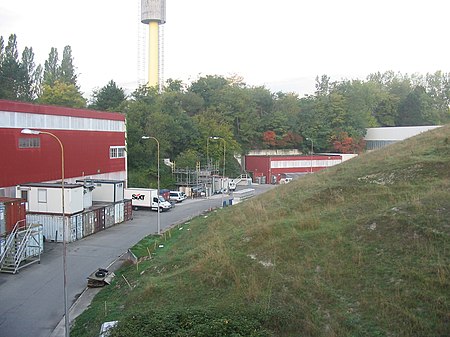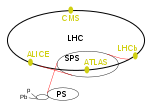The ISOLDE (Isotope Separator On Line DEvice) Radioactive Ion Beam Facility, is an on-line isotope separator facility located at the centre of the CERN accelerator complex on the Franco-Swiss border. Created in 1964, the ISOLDE facility started delivering radioactive ion beams (RIBs) to users in 1967. Originally located at the Synchro-Cyclotron (SC) accelerator (CERN's first ever particle accelerator), the facility has been upgraded several times most notably in 1992 when the whole facility was moved to be connected to CERN's ProtonSynchroton Booster (PSB). ISOLDE is currently the longest-running facility in operation at CERN, with continuous developments of the facility and its experiments keeping ISOLDE at the forefront of science with RIBs. ISOLDE benefits a wide range of physics communities with applications covering nuclear, atomic, molecular and solid-state physics, but also biophysics and astrophysics, as well as high-precision experiments looking for physics beyond the Standard Model. The facility is operated by the ISOLDE Collaboration, comprising CERN and sixteen (mostly) European countries. As of 2019, close to 1,000 experimentalists around the world (including all continents) are coming to ISOLDE to perform typically 50 different experiments per year.Radioactive nuclei are produced at ISOLDE by shooting a high-energy (1.4GeV) beam of protons delivered by CERN's PSB accelerator on a 20 cm thick target. Several target materials are used depending on the desired final isotopes that are requested by the experimentalists. The interaction of the proton beam with the target material produces radioactive species through spallation, fragmentation and fission reactions. They are subsequently extracted from the bulk of the target material through thermal diffusion processes by heating the target to about 2,000 °C.The cocktail of produced isotopes is ultimately filtered using one of ISOLDE's two magnetic dipole mass separators to yield the desired isobar of interest. The time required for the extraction process to occur is dictated by the nature of the desired isotope and/or that of the target material and places a lower limit on the half-life of isotopes which can be produced by this method, and is typically of the order of a few milliseconds. For an additional separation, the Resonance Ionisation Laser Ion Source (RILIS) uses lasers to ionise a particular element, which separates the radioisotopes by their atomic number. Once extracted, the isotopes are directed either to one of several low-energy nuclear physics experiments or an isotope-harvesting area. A major upgrade of the REX post-accelerator to the HIE-ISOLDE (High Intensity and Energy Upgrade) superconducting linac completed construction in 2018, allowing for the re-acceleration of radioisotopes to higher energies than previously achievable.








